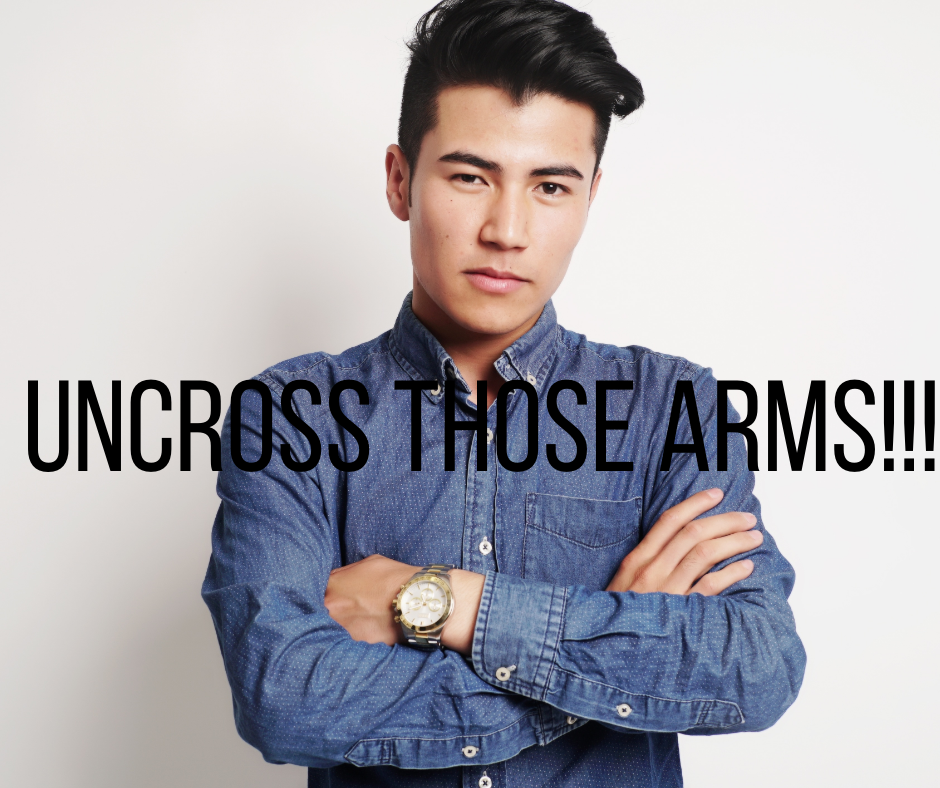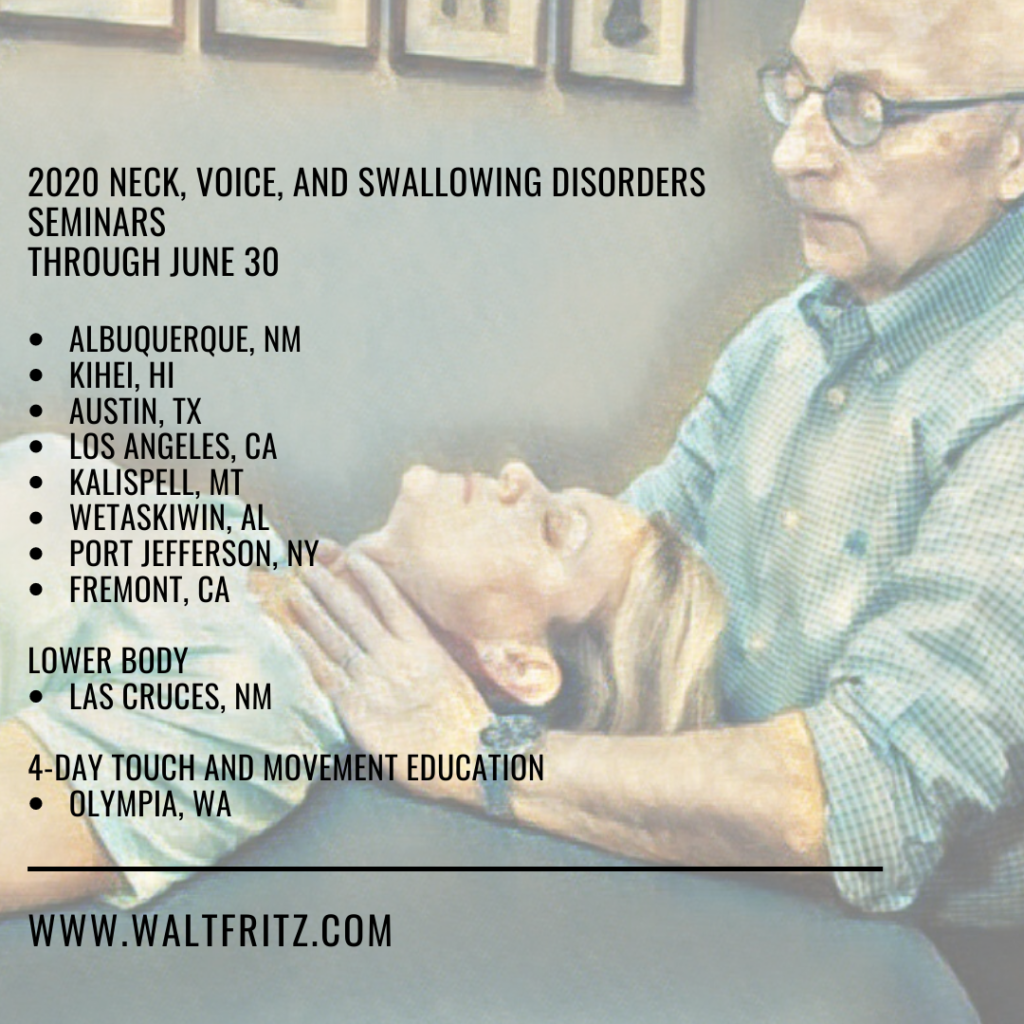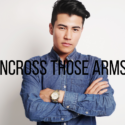Crossed-arm syndrome
The past decade seems to have been about losing friends. Leagues of MFR-type friends have gone away, no doubt due to my counter-culture statements and posts questioning much of what I was taught in my MFR training. I bid them a happy goodbye.
So I suppose it’s time to alienate another cohort group; physical therapists. Not all PTs, just the crossed-arm ones.

I understand the trend toward patient-empowerment, trying to build self-efficacy without risking dependency on the clinician. This has elevated the interventions of education and exercise over manual therapy in terms of best-practice recommendations for physical therapists. As a long-term PT, I can understand this movement, but the trend comes at a price. First off is the belief that manual therapy, viewed as a passive intervention, should be dosed sparingly as to not encourage dependency. Incontrast, I contend that if manual therapy allows movement with less fear, pain and caution, this, in itself, builds independence. I do accept that that more common view of PT is the exercise-based model, though I have HUGE issues with intellectual lazy PTs who blame weakness on pain. What I don’t and will not accept is an apparent lack of engagement on the part of my profession. I have a great respect for the time, patience, money, and emotional investment that a budding PT student makes to become a DPT, as it is not an easy path. But what are we building?
Recently I had dropped my car off for a service at a local repair facility. Rather than join the squad impatient chair-sitters, waiting for word of the bill in need of payment, I chose instead to take a long walk. This walk afforded me an opportunity to cruise through the nearby picturesque village, able to see the sights while getting my exercise. My walk took me past the village PT clinic…twice, once on my outbound journey and again on my way back to the garage. On my first pass I was easily able to view a good handful of patients dutifully working out on at their respective stations, all seeming to be completely engaged in their task. But at the center of the facility I viewed two individuals who I am assuming where the resident PTs. How did I know this? Apparel, for one. They were the only ones NOT engaged. Instead, they stood side by side, talking with each other, in the dreaded arms-crossed posture. Argh! OK, I thought, as I passed, maybe I caught them at a bad moment. Maybe it was a fluke. I”l take a look on my way back, hoping that they would not be caught in such a compromising position.
The walk took me through the rest of the village and, with a bit of a divergence, along a roaring creek. Quite lovely. But as I again approached the PT clinic my suspicions rose and, sure enough, there they stood. Maybe they have moved and returned to the exact same spot to converse again…or maybe not. But there they stood, arms-crossed and conversing, while their patients dutifully went through their paces.
A PT may argue that those patients were engaged in self-helping behaviors, learning self-reliance and building upon their own potential. Quite possibly. But why did the PTs need to be standing there so unengaged? We can be more than arm crossers, we can be cheerleaders, encouragers, coaches, teachers, and, yes, occasionally, applying manual interventions. Self-reliance is key, but what has the PT profession become; a bunch of arm crossers? Manual therapy PT has its own skulls in the closet, but that’s not what this post is about. It’s about arm crossing.
My bias is toward using manual therapy as a primary intervention and evidence exists for this as a viable treatment strategy. I strongly discourage dependency of any sort and abhor it in other professionals. My work is set up to empower my patient to feel like they can move move and with less fear. I teach them to self-treat, based on my examples, and make it a strong encouragement to engage in movement of their choosing. I recognize that a good majority of patients seen for exercise-based PT improve, though those that don’t often come through my door.
As a profession, PT and other similar professions, the view of us by the public matters. Arm-crossing and spending a good amount of your time conversing with your peer instead of your patient is simply a lame way to spend medical dollars, not to mention a very expensive education.
Next time I make that walk, my hope is to see PTs engaged with their patient. They may not be touching, using manual therapy as I do, but I hope to see them spending time speaking to their patients, coaching and encouraging, aiding and correcting, prescribing and adapting. I hope to see them doing the things our profession(s) are capable of and not resorting to the stereotypes that pockmark our profession.
BAN ARM-CROSSING
Cheers,
Walt Fritz, PT
Foundations in Myofascial Release Seminars
Copyright© 2020 Walt Fritz, PT
Please check out my seminar offerings at this link. I teach seminars across the globe to professionals of all types, including SLPs, Voice Professionals, and Massage/Physical/Occupational therapists. .
I am a proud member of the Medbridge Massage team of educators. I have 8 online courses, all presented from my updated, science-informed model of myofascial release. Take advantage of some pretty great discounts with a 12-month package of viewing, learning and CEUs with unlimited viewing of not only my (pretty great) courses but also over a dozen of the top educators in the massage profession. Approved for CEUs for all US MTs. Use the discount code FRITZmassage for the $49/year price by using this link: Medbridge Massage.

I can also offer some pretty great discounts to SLPs, PTs, and OTs through Medbridge Education. Click the image below here to have the discount applied.




The patients came through my door sent by my chiropractor colleague. They told me “The PT my primary care provider sent me to had me do this movement and it hurt terribly but he insisted I keep doing it. I hurt so bad for the next three days I could not get to the chiropractor”
We all have the potential to push agendas. While I think conceptually most of us have moved beyond, “no pain, no gain”, many see that exercise can overcome all and will often encourage the patient to push through. And it only works some of the time.